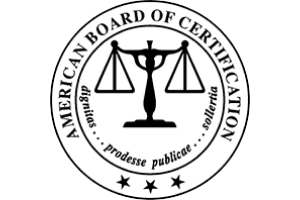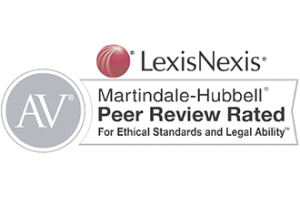Get a Fresh Start With Us
Civil Litigation FAQs
- What Is Civil and Commercial Litigation?
- What Is the Statute of Limitations?
- What Are the Stages of Litigation?
- What Is Discovery?
- What Is Motion Practice?
- What Is Alternative Dispute Resolution or ADR?
- How Long Does a Civil Litigation Case Take From Start to Finish?
What Is Civil and Commercial Litigation?
Civil litigation occurs in the civil law courts. Commercial litigation involves business disputes. Most of Starr & Starr, PLLC civil and commercial litigation involves debtor – creditor claims, creditors’ rights, judgment enforcement, and other money disputes.
What Is the Statute of Limitations?
The statute of limitations is the time period within which a lawsuit must be commenced or will be time barred. Certain acts can toll or extend the statute of limitations. The statute of limitations varies depending on the cause of action (underlying claim). If you or your company have legal claims to enforce, it is important to not sit on your rights and to promptly consult with an attorney regarding the merits of your claims and whether it is advisable to file a lawsuit.
What Are the Stages of Litigation?
A lawsuit is commenced by the filing of a complaint by the plaintiff with a court. A summons and copy of the complaint are then served on the defendant or defendants who have a specified period of time to file an answer (or other response, such as a motion) to the complaint. The exact time period for the defendant to answer varies depending upon the court involved and the method of service. If a defendant is served with a summons and complaint and fails to answer, the plaintiff may apply for a default judgment.
If the defendant answers, the next stage of litigation is discovery (discussed below) and motion practice (discussed below). If the litigation does not voluntarily settle or get disposed of through motion practice, it will then go to trial or, in certain cases, to alternative dispute resolution (discussed below). The trial stage results in a judgment (or sometimes in a mistrial). If the judgment is in favor of the plaintiff, the next stage in the litigation is judgment enforcement. Even if a defendant appeals a judgment, a plaintiff can usually seek to enforce its money judgment unless the defendant obtains a stay pending appeal, which usually requires the defendant to post a bond.
What Is Discovery?
Discovery is the process by which parties to litigation seek to obtain evidence from the opposing side or third parties relevant to the claims and defenses raised in the lawsuit. In the United States broad pre-trial discovery is permitted. This includes written discovery and depositions (both discussed below). Different discovery rules apply in federal court and state court, although there are many similarities between the two.
Written discovery includes interrogatories (written questions that a party is required to answer), requests for admissions (written requests to admit or deny certain facts relevant to the claims and defenses raised in the lawsuit), and requests for production of documents (written request to produce documents relevant to the claims and defenses raised in the lawsuit). Documents can also be obtained from third parties who are not involved in the litigation through a document subpoena.
A deposition (referred to as an examination before trial or EBT in New York state court practice) is the questioning of a witness under oath in the presence of a stenographer who records the questions and answers and then prepares a written transcript. Parties to a lawsuit can be compelled to participate in a deposition and third party witnesses can be subpoenaed to testify in a deposition. The results of discovery can be utilized in motion practice and at trial.
What Is Motion Practice?
A motion is a written request to the court to grant relief based on statutory and/or case law. Motion practice refers to substantive or procedural motions that a litigation party files in court. Procedural motions affect the procedural conduct of the case, for instance, compelling one party to respond to interrogatories. A dispositive motion is a motion that, if granted, disposes of the case, such as a motion for summary judgment or a motion for dismissal. A motion for summary judgment can be generally described as a motion seeking judgment prior to trial on the grounds that based on the facts of the case and applicable law there are no triable disputed factual issues. A dismissal motion is a motion seeking dismissal of a lawsuit. Effective motion practice can play an important role in the outcome of litigation.
What Is Alternative Dispute Resolution or ADR?
Alternative dispute resolution or ADR refer to methods for resolving legal disputes other than through in-court litigation. Arbitration and mediation are two common ADR methods.
Arbitration involves submitting a dispute to a single arbitrator, or a panel of 2-3 arbitrators, who will issue a binding decision in the matter. Parties may be subject to arbitration based on an arbitration provision in a contract, or may voluntarily agree to submit their dispute to arbitration. Binding arbitration decisions are usually final and non-appealable except based on certain limited grounds.
Mediation involves an attempt by parties to a dispute to resolve their dispute by agreement reached with the assistance of a mediator. The mediator does not decide the dispute like a judge or arbitrator, but rather aids the parties in trying to reach a settlement acceptable to both sides. Mediation is an informal process compared with litigation or arbitration.
How Long Does a Civil Litigation Case Take From Start to Finish?
If the defendant does not answer the summons and complaint, the plaintiff can seek to obtain a default judgment. If the defendant answers the complaint, the length from start to finish of a civil or commercial litigation case depends on a number of factors, including, the complexity of the case, number of parties involved in the litigation, amount at stake, the court in which the lawsuit is filed and caseload of that court, and whether the case is resolved through settlement or motion practice or goes to trial.
While litigation involving simple small dollar claims may get resolved in a matter of months, litigation involving complex high value claims may take many months or years from start to finish.
Client Reviews
NYC personal bankruptcy client: I just wanted to send a note to say "Thank you!" You made a very difficult situation much easier to comprehend and cope with - considering the decisions that one gets/comes to when facing bankruptcy. I wish you the best.
I want to to thank you very very much for your kind and considerate assistance on every step of the process. You saved me from a huge burden and I feel much happier, less stressed and capable of advancing my life further. THANK YOU!!!
NYC personal bankruptcy client: You have done a wonderful job and you have made what was an extremely difficult situation less difficult.
Search
Areas Served: Manhattan, Brooklyn, Bronx, Queens, Staten Island, Long Island, Westchester, Northern New Jersey

Contact Us
1. Over 60 Years of Combined Experience | 2. Big Firm Quality, Boutique Rates | 3. Attorneys Who Care About Your Needs
Fill out the contact form or call us at (888) 867-8165 or (212) 867-8165 to schedule your consultation*.







